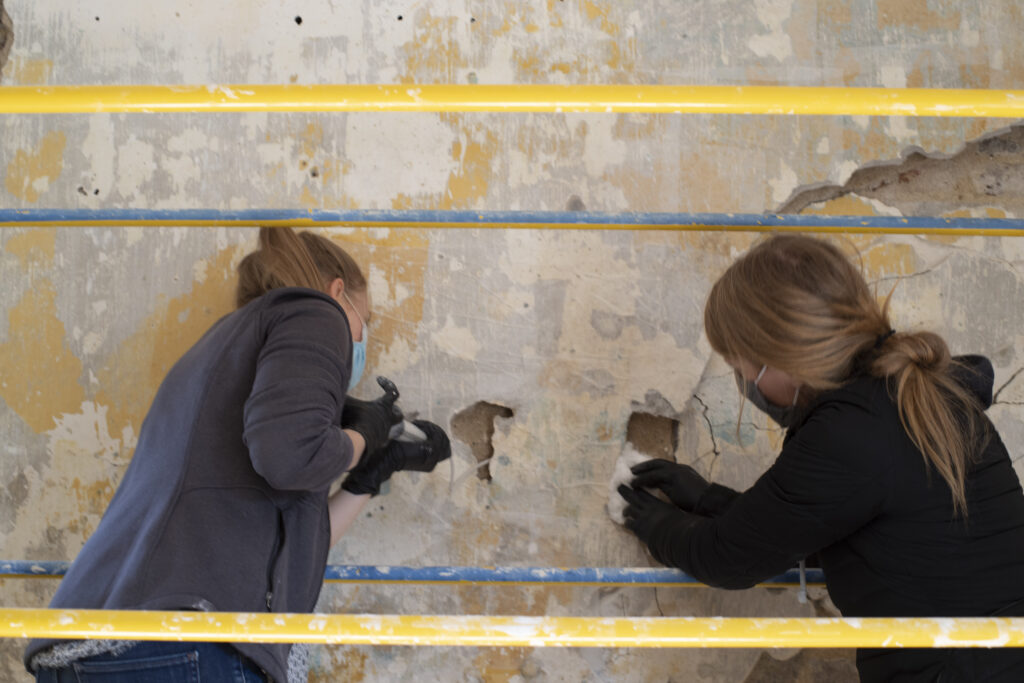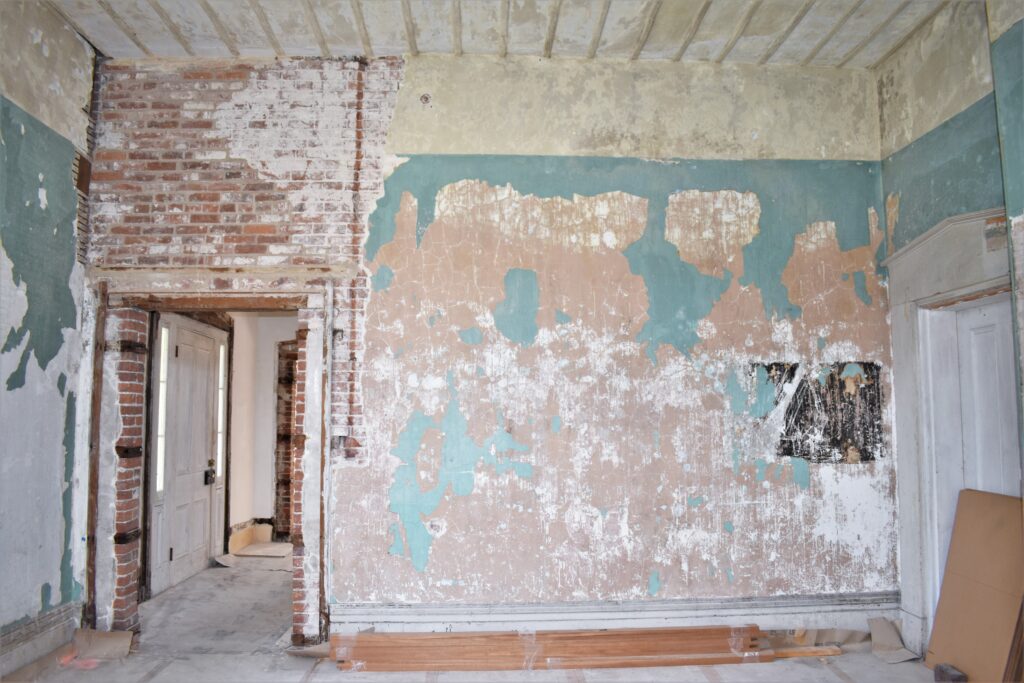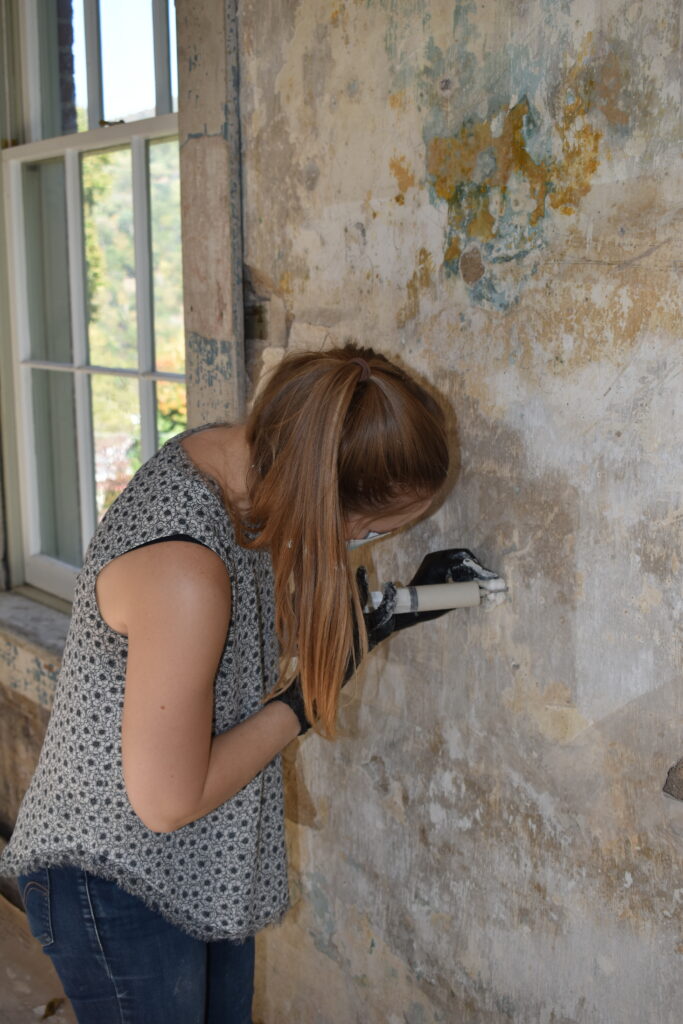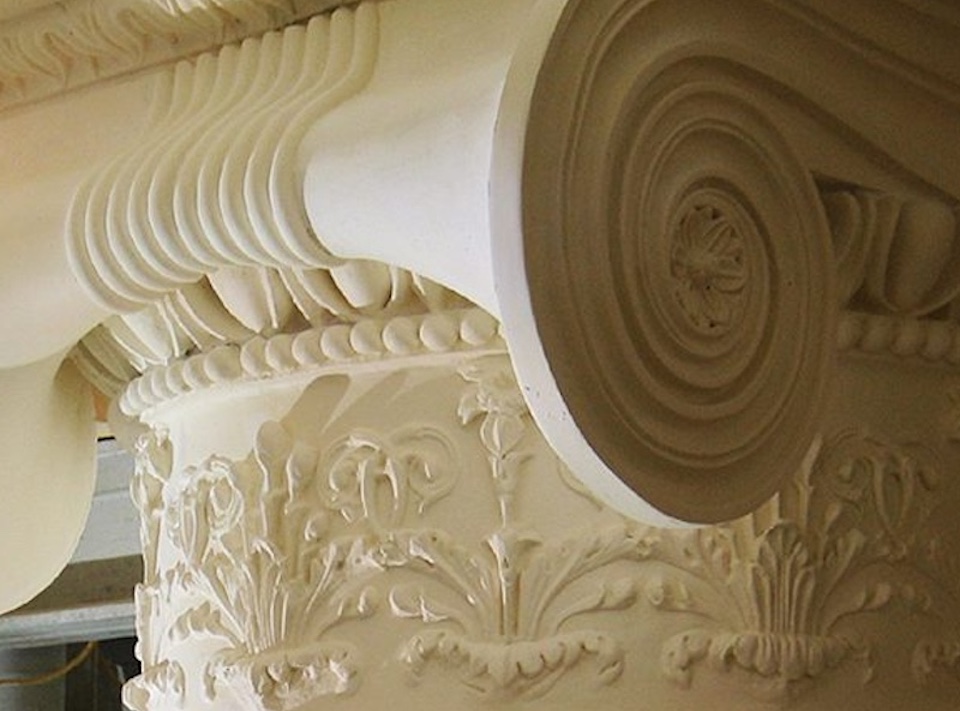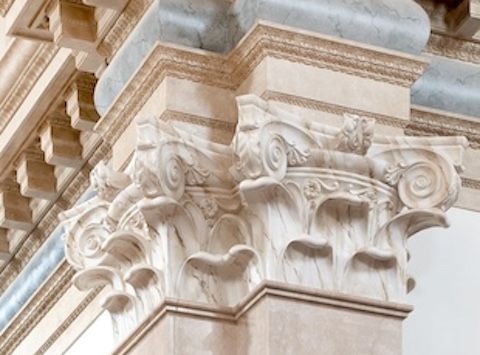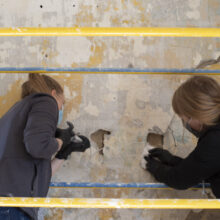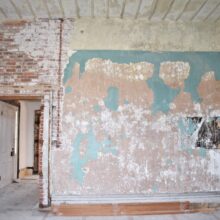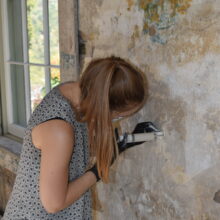Senior Conservator – Conservation Manager, Katey Corda, will present the Conservation of the Lockwood House & the Revision of Inadequate Project Specifications during a speciality session on Thursday, May 18th, from 4:30–5:30 pm EST.
Senior Conservator Brooke Russell will be chairing the Panel Discussions for the ASG presentations, including the ASH-AHN (archaeology heritage network) joint presentations and the APT-ASG joint disaster preparedness and response panel.
Abstract
EverGreene Architectural Arts was contracted by the National Park Service (NPS) to stabilize the interior surfaces of the historic Lockwood House, located in Harpers Ferry, West Virginia between 2020-2021. Encompassed by Harpers Ferry National Historical Park and overlooking the junction of the Shenandoah and Potomac Rivers, Lockwood House provides a glimpse into the United States’ Civil War era. The house was built in 1848 as the home of the Armory Paymaster and was used as a hospital for Confederate, and then Union soldiers, and to hold prisoners throughout the Civil War. When the war was over, Lockwood House transitioned into a school for freed slaves as part of Storer College, one of the first colleges for African Americans in US history.
Lockwood House has been minimally altered since the closure of Storer College in 1955. Period wallpaper and historic paint layers remain in many of the rooms, as well as the original plaster layers dating to mid-19th Century construction. Perhaps the most significant historical artifact maintained in the house is its collection of 19th- and 20th-Century graffiti, written and drawn directly on the finish coat plaster in multiple rooms. The graffiti is an invaluable record of Lockwood House’s history and its variety of occupants, prisoners, and students, who contributed to a collection of drawings, calligraphy, and signatures that uniquely document a significant era of US history.
Lockwood House fell into disrepair over time, victim to water infiltration and poor maintenance, which has resulted in severe degradation and loss of historic material, and put much of the historic graffiti at imminent risk. The collaborative project between the NPS and EverGreene aimed to preserve the interior fabric in its current condition, rather than attempting to restore it to any previous appearance. The project focused exclusively on stabilization efforts, using compatible preservation materials and methods for remedial treatments.
One of the largest challenges faced over the course of the project was that certain treatment and materials outlined in the project specifications proved to be inadequate for the unique conditions encountered onsite. Adherence to those specifications, with particular reference to the treatment of delaminated plaster, would have damaged original materials and rendered much of the historic graffiti virtually illegible. Working collaboratively with the NPS, the specifications were challenged and adapted on the spot, which is unusual for government projects.
This presentation intends to address not only the specific criteria considered in the development of a unique injection grout material, but also the approach to successful revision of project specifications when inadequacies were identified.
EverGreene is a proud supporter of the 51st AIC Annual Meeting.
